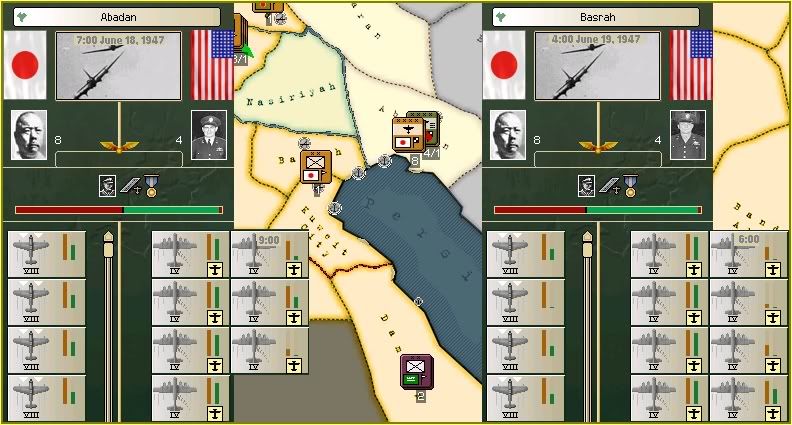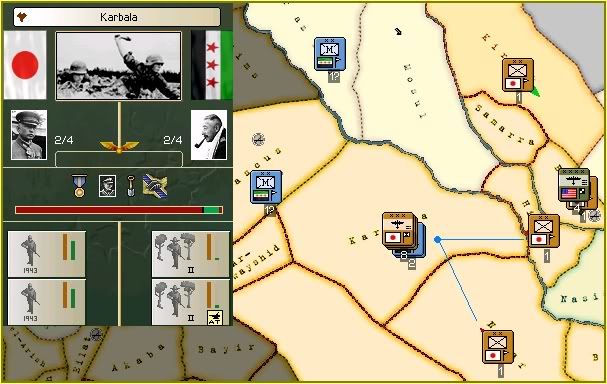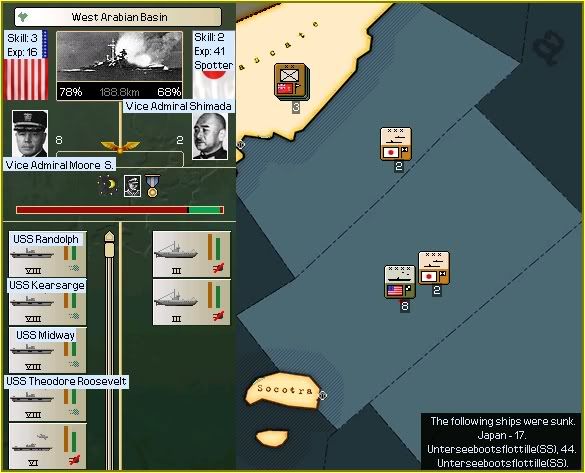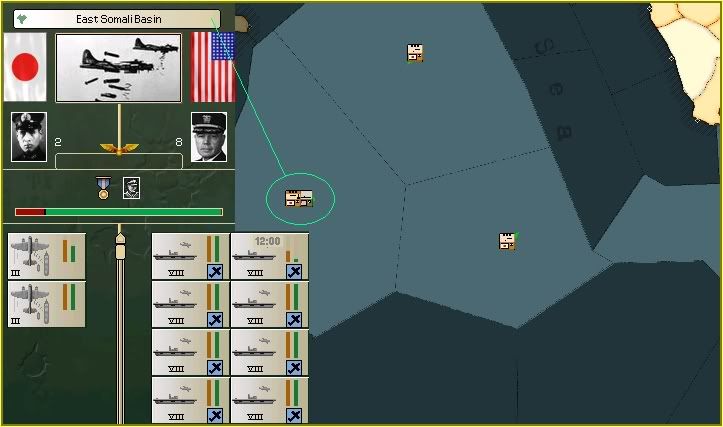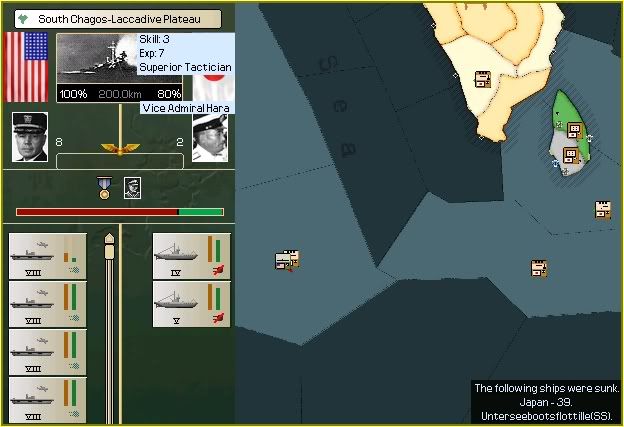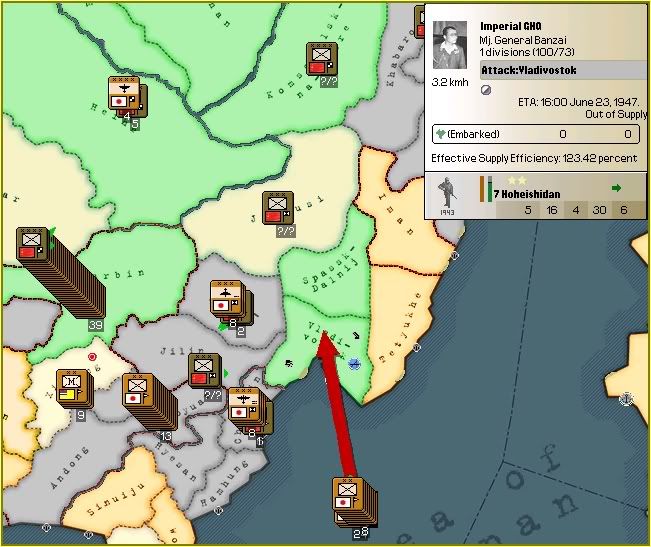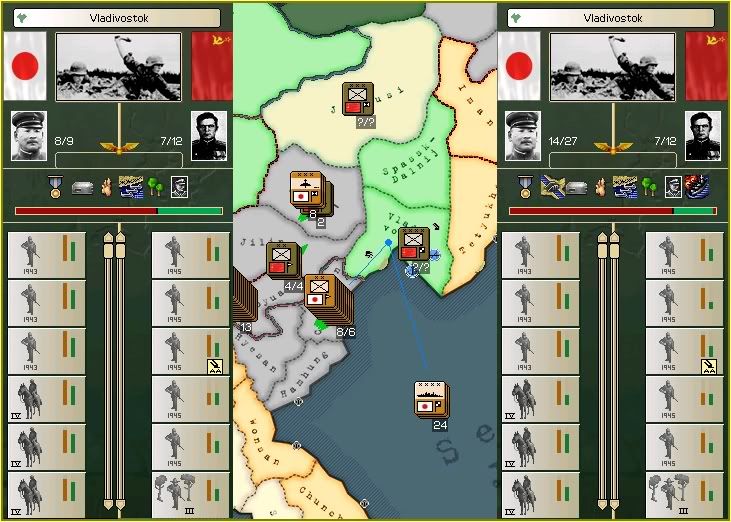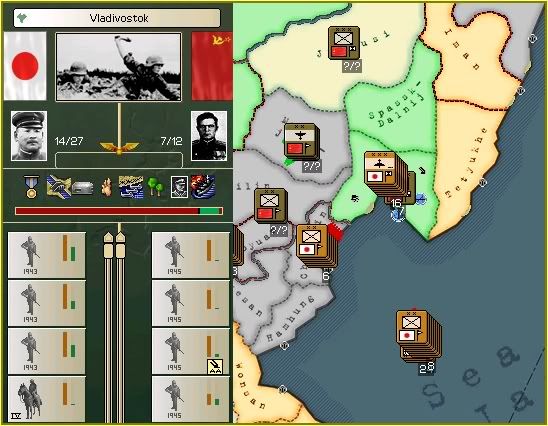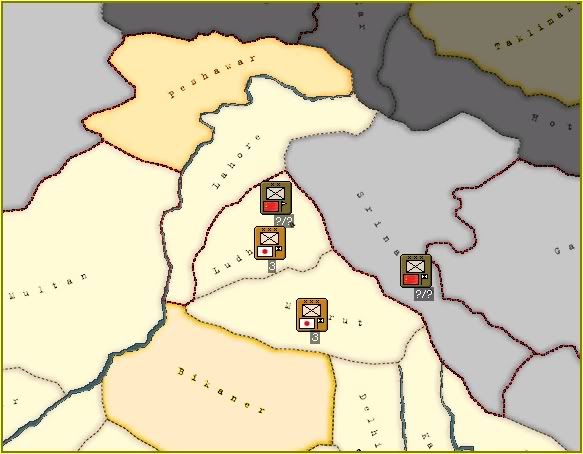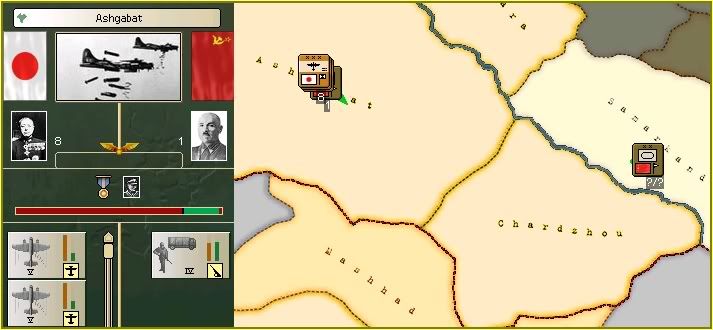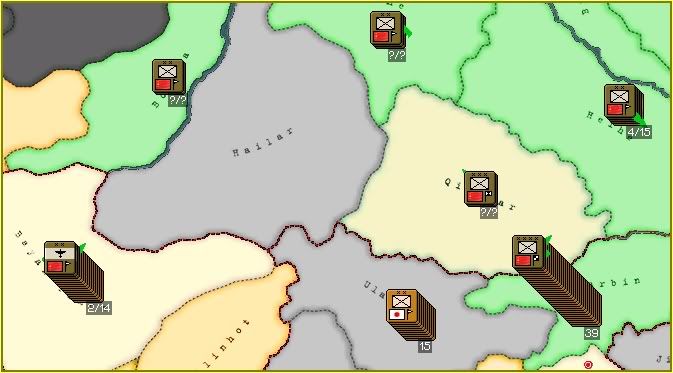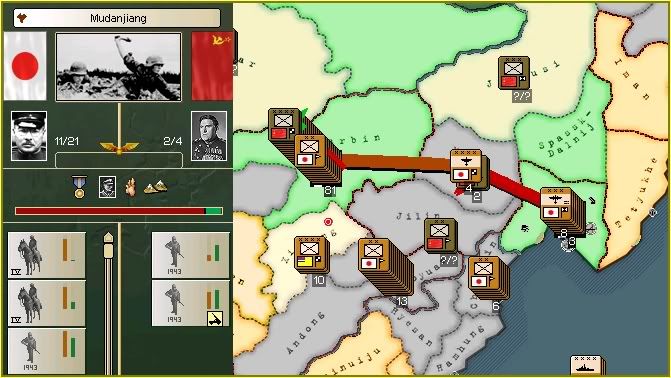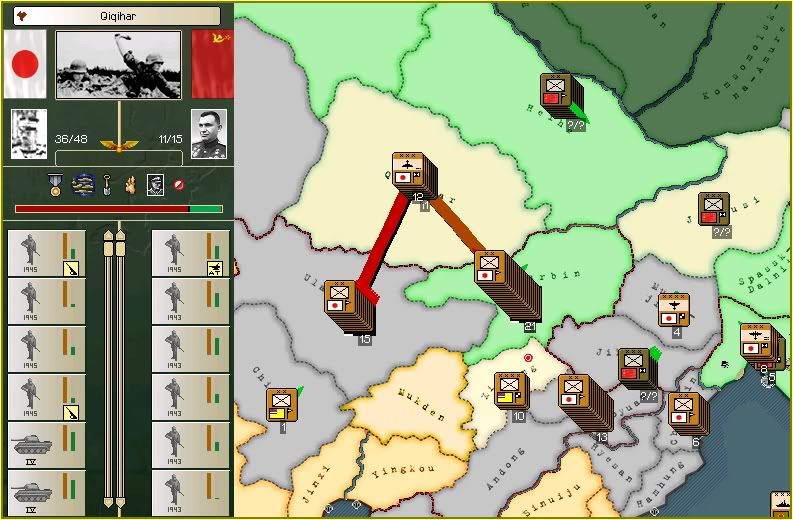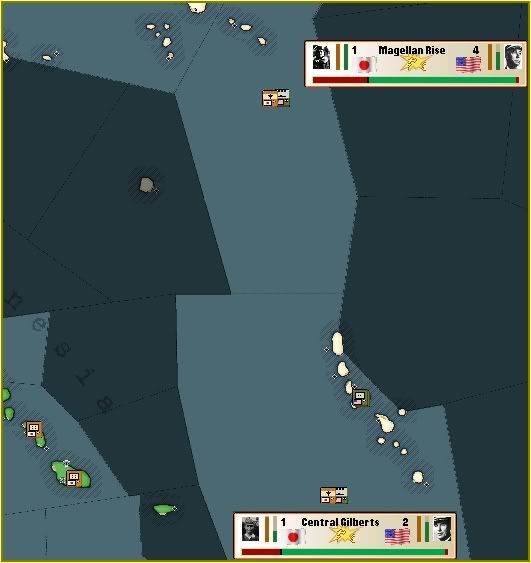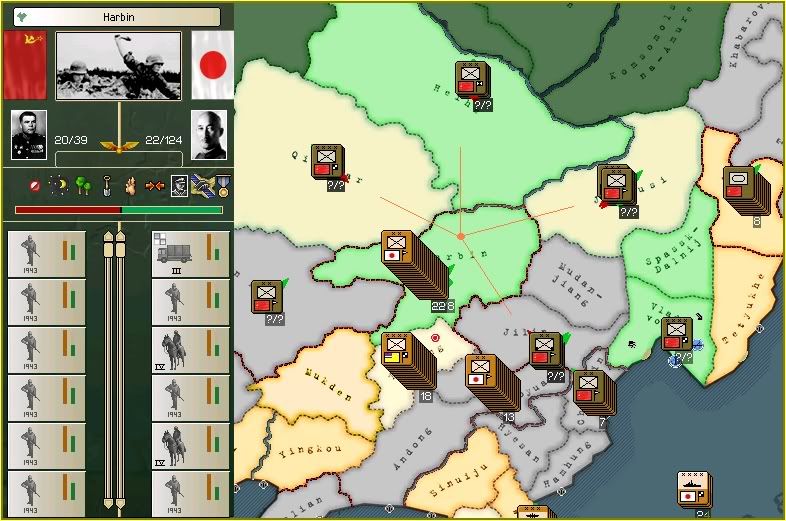
1800 hours saw a second Soviet attack towards Harbin to try and dislodge Terauchi. This time twenty Soviet divisions would participate from four different directions. Terauchi's troops were given more supplies to fight off this attack which he had hoped to avoid as it placed more strain on the already over taxed Japanese supply lines.
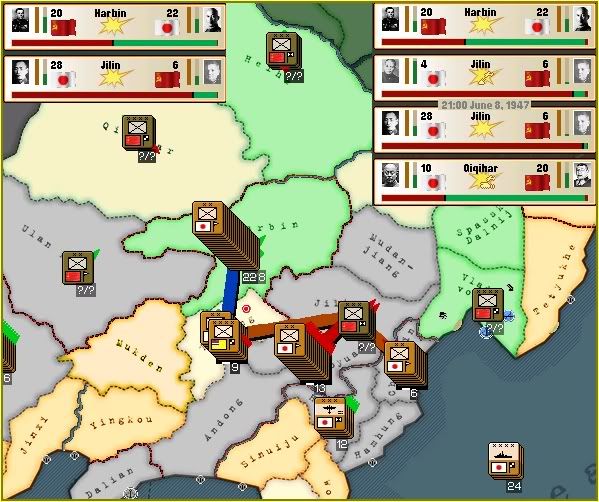
At 1900 hours Hata began to remove one threat from Harbin as he launched a well supported assault towards Jilin and its six defending divisions. By 2100 hours this attack had almost finished as the Soviet defences collapsed which would also allow Terauchi to hold Harbin with relative ease given the numbers attacking him. The arrival of Dive bombers over Qiqihar province revealed a large enemy army in the province which could prove to be a problem.
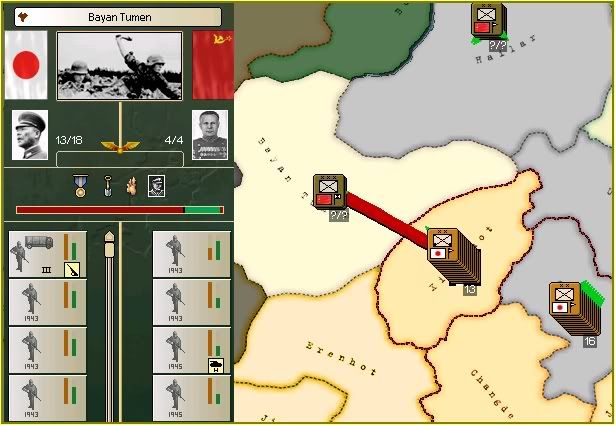
Japanese forces arrived in Xilinhot at 0400 hours on June 8th and immediately attacked north towards the open plains of Bayan Tumen. They would easily overcome the four Soviet divisions defending the province and would advance to cause yet more problems for the Soviet Commanders.
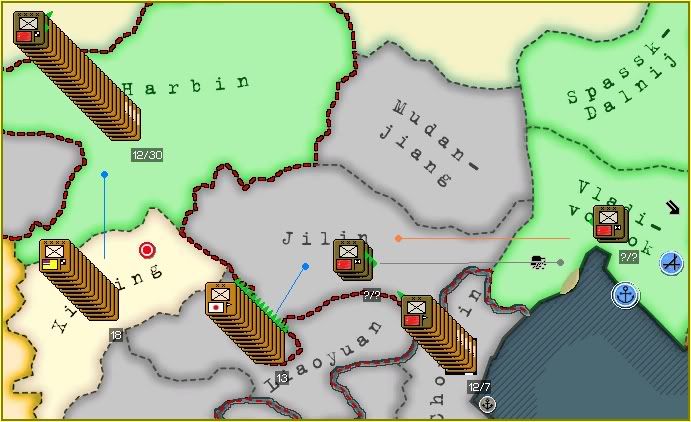
The initial advances into Harbin and Iman had not had any impact on the defenders of Vladivostok but the attack on Jilin had. This force was now moving towards Jilin to try to prevent Hata advancing, which would in turn weaken Vladivostok and possibly allow a Japanese landing in the still infrastructure depleted province. The nine Japanese divisions in Xinjing had begun to march north to add to Terauchi's defences in Harbin.
1300 June 10th 1947.
North China Army Headquarters. Lanzhou, China.
The arrival of the bombers in the Middle East had slowed any possible advance by the Soviets into north eastern Persia but had also removed the easier targets. A new line of attack would commence while the bombers awaited further Soviet troops to advance.
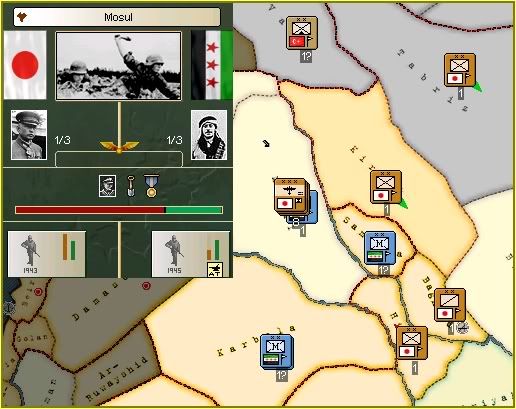
The well entrenched Syrian troops in Iraq were attacked by the bombers to reduce their organisation before small ground attacks were made to force them to retreat. Once they were retreating they became easy targets for the bombers to finish off and reduced any chance of Syrian attacks against the weak Japanese lines in the area.
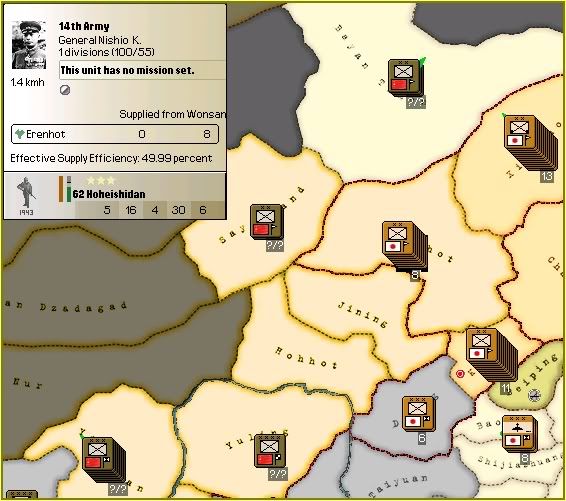
General Nishio arrived in Erenhot on June 14th to secure the province. He easily held of a minor counter attack and was now in the pivotal position in the line. Higashikuni knew that he could easily withdraw again if his forces were to come under too heavy an attack.
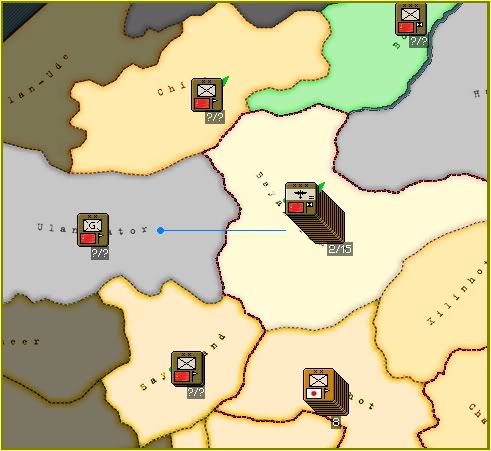
On the 16th the advance into Bayan Tumen was completed and Higashikuni ordered these forces to attack and capture the small garrison guarding Ulan Bator. This was accomplished with ease with the forces being ordered to hold their current position rather than advance into the mountains. They were to prevent any possible rapid response to the attacks by the Kwantung Army in Manchuria by forcing the Red Army to move troops further north.
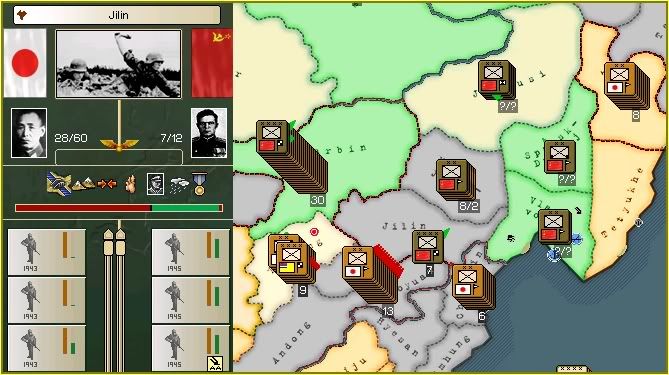
Hata's forces encountered the Vladivostok defenders at 1000 hours in Jilin. Hata would win the battle and force a second retreat from the Soviet troops but he would be forced to halt his advance to allow his troops to rest as they could easily be counter attacked once they arrived in Jilin. While he rested the bombers would further reduce the enemy presence in the area making follow up advances easier to achieve.


